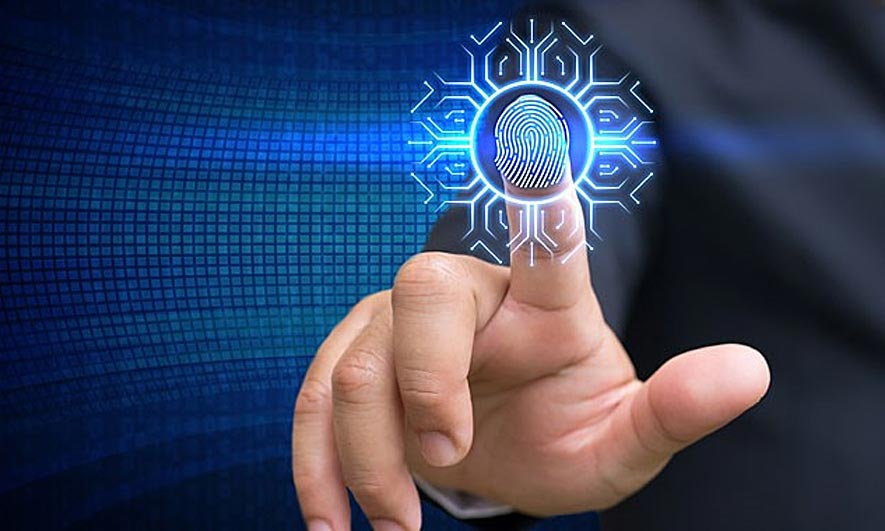If there’s one sector that’s known for disruption, it’s the tech industry. Big names like Apple, Facebook and Google have made it possible for people to communicate, build social networks across the globe and get answers to any question in minutes.
Even an industry built on disruption and innovation, however, couldn’t have prepared for COVID-19. To help slow the spread of the virus and protect employees, offices across the country transitioned to remote work, creating a plethora of new risks.
Companies are still adjusting to the new worker safety and cyber security risks that come with remote work arrangements.
Other sectors often look to tech companies to lead the way in producing solutions, like increased 5G and video conferencing solutions, even though they too are learning to navigate the new normal.
In these times of uncertainty, insurance can help tech companies find the stability they need so that they can continue to innovate during the pandemic.
“The economics and the current state of technology companies are as dynamic as ever,” said Andrew Zarkowsky, Technology Industry Practice Lead at The Hartford. “As a company that’s been innovating in the insurance space for more than 200 years, and insuring technology companies for over 30 years, we are well-prepared to address those challenges.”
Tech Companies Are Leading the Work-From-Home Revolution
When COVID-19 hit, one of the first things many companies did to protect their workers from the virus was move to a remote workforce.
Remote work was intended to be a temporary solution to curb the spread of the virus, but many employees are finding they prefer the flexibility of working from home.
Tech giants like Twitter are paving the way for this kind of future where employees will continue to work-from-home post-pandemic, though Zarkowsky predicts more companies will shift to a hybrid model, rather than 100% remote work after COVID.
Remote work, while more flexible for employees, can introduce safety risks that don’t exist within the controlled office environment. In an office, employees have to use ergonomic desks and chairs. At home, they might be working at a kitchen table or on a couch, which could lead to back or wrist strain.
“Everybody has their really nice ergonomic-friendly desks and chairs at an office. It's a very controlled environment,” Zarkowsky said. “Then you push that to home. What you're ending up with is an uncontrolled environment. From a risk perspective, that does change things. To help reduce the risk, companies should talk to their employees and provide them with ergonomic tips.”
Demand for New Technologies and Evolving Cyber Risks
The increase in remote work has also brought about demand for new technologies to support a virtual environment that allows for collaboration and keeps companies and people safe.
Some of these shifts are motivated by practical reasons. With more people working remotely, there’s been an increase in demand for reliable Wi-Fi, broadband and 5G services. To better connect with employees and clients and replace in-person meetings, companies are using collaboration and video conferencing technologies more frequently.
Other shifts are focused on improving safety during the pandemic. Biometric technologies like retina-scanners, facial and voice recognition eliminate touch points while providing enhanced security and operational benefits. Biometric devices that can detect temperatures from a distance help keep people safe by ferreting out early symptoms of the virus while collecting data critical for contact tracing and productivity analysis.
“Now, the security systems and sensitive equipment that are installed into buildings are more likely to use biometric technology due to its advanced safety and data collection features,” said Jim Charron, underwriting director, technology industry at The Hartford.
Although remote work arrangements and biometric technologies bring benefits to companies and employees, they also come with added risks.
Employees working from home may not have networks and servers that are as secure as those found in offices, leaving companies more vulnerable to cyber-attacks. Remote work also puts additional strains on a company’s network, which could compromise security.
“When you do have work-from-home scenarios, you are adding a lot of uncontrolled risk from a cyber perspective,” Zarkowsky said.
Ransomware attacks, which were increasing before the pandemic, have become an even bigger risk.
Cyber criminals are taking advantage of the pandemic by sending phishing emails impersonating the U.S. Centers for Disease Control and Prevention (CDC) and the World Health Organization (WHO). Theses emails appear to come from a credible source and all it takes is one employee to open an email attachment for a hacker to get access to a company’s computer system.
Cyber criminals are also targeting biometric databases. If companies are collecting biometric data, they open themselves to claims from employees in the event personal information is compromised by a hack. Passwords can always be changed; a person’s retina cannot.
“I think that you’re just seeing more and more of the economy rely on the technology products and services that the technology industry provides,” Zarkowsky said. “With that reliance, there is more opportunity for a company to have a financial loss based on their technology being down or a cyber-attack.”
Solutions for Evolving Risks
While these risks existed before the pandemic, COVID-19 has accelerated the demand for new technologies. Consequently, insurance carriers have evolved their risk management services and the way they underwrite cyber security and technology risks.
“We have a long history of helping clients, specifically with employee-related risks and even more specifically ergonomic risks. We’ve adapted some of our risk management services to be virtual, to focus on the work-from-home environment, because it’s just a unique and different risk in today’s world,” said Zarkowsky.
“We’ve also launched external resources to help businesses address COVID-19 risks. Some of the topics include improving ergonomics and mitigating cyber risk. With the increase in cyber-attacks, we’re focused on helping our customers be proactive.”
Companies need proactive and reactive measures to prevent a cyber-attack or mitigate the damage should one occur. Risk assessments are a good place for companies to start because they help identify vulnerabilities by scanning the outside perimeter of a company’s network. The Hartford offers its customers risk assessments along with a suite of solutions to prevent and respond to cyber-attacks.
“Cyber is just one of our areas of expertise. We are also focused on consistently building up our expertise in other areas such as biometrics, digital health, telehealth, AI and digital media, and creating new solutions for those types of risks. Now, with the accelerated adoption of these evolving technologies, we are able to use our insights to underwrite and help protect these unique risks,” Charron said.
“Things are changing,” Zarkowsky added. “We have the ability to understand and size up that risk and partner with our agents to provide appropriate product and service solutions for it.”
When assessing each risk, underwriters and agents need to think globally as many technologies operate internationally.
“Technology companies are truly global and that’s how we perceive them. That’s why we have a global technology practice,” Zarkowsky said. “The idea that the virus stays in one country or technology stays in one country, obviously that doesn’t make any sense.”
The Demand for New Technologies Increased Government Regulation
On top of this added demand for technology products, tech companies are facing increasing scrutiny from governments and regulators.
There’s been some speculation that there will be changes to Section 230 of the Communications Decency Act aimed at holding tech companies accountable for what happens online.
Section 230 currently shields tech companies from being liable for content users post on their sites. If it were to be revoked or reformed, it could open enterprises like Facebook and Twitter to a wave of claims, and they may need increased general liability and E&O protections.
Biometric technology is also facing its own push from regulators. Government bans, state specific legislation and developing Federal and European legislation addressing data collection and bias is adding complexity to product design, implementation and compliance.
“Companies are going to need to pay very close attention to the changing laws,” Zarkowsky said. “At The Hartford, we’re constantly monitoring the regulatory landscape so we can find new ways to help our insureds adapt to the changes.”
Article featured in "Risk & Insurance."
Links from this site to an external site, unaffiliated with The Hartford, may be provided for users' convenience only. The Hartford does not control or review these sites nor does the provision of any link imply an endorsement or association of such non-Hartford sites. The Hartford is not responsible for and makes no representation or warranty regarding the contents, completeness or accuracy or security of any materials on such sites. If you decide to access such non-Hartford sites, you do so at your own risk.
The Hartford Financial Services Group, Inc., (NYSE: HIG) operates through its subsidiaries, including the underwriting company Hartford Fire insurance Company, under the brand name, The Hartford,® and is headquartered in Hartford, CT. For additional details, please read The Hartford’s legal notice at https://www.thehartford.com.




